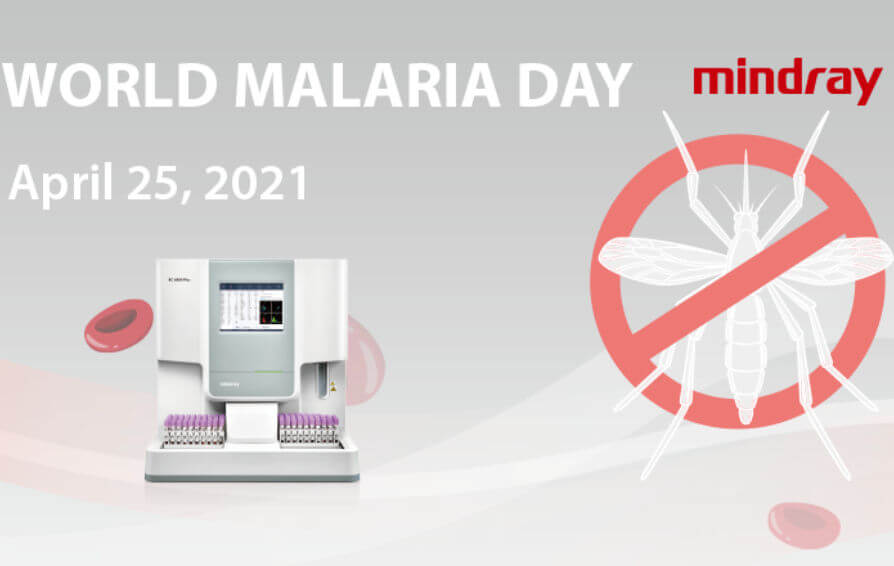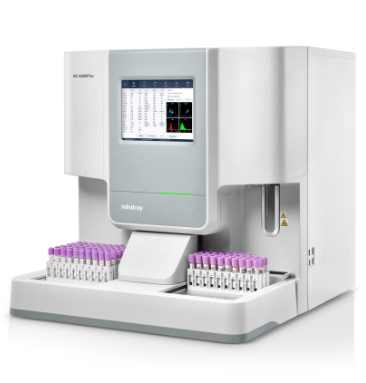Epidemiology of malaria
Malaria is a life-threatening disease caused by plasmodium. In 2019, nearly half of the world’s population were at risk from malaria. There were 229 million new infections and 409,000 people died. Most cases and deaths occurred in sub-Saharan Africa.[1]
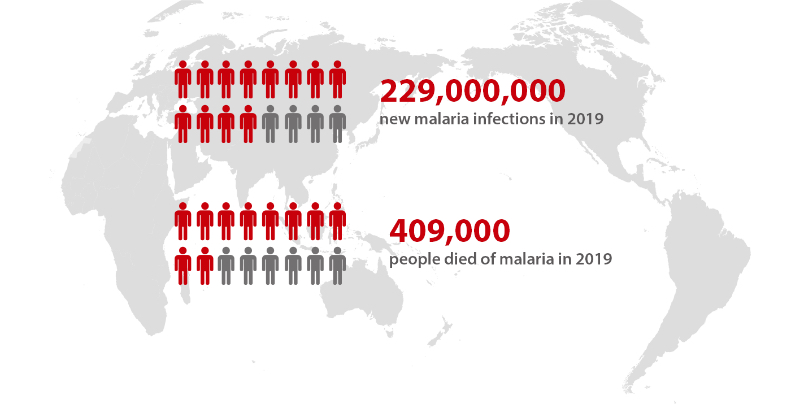
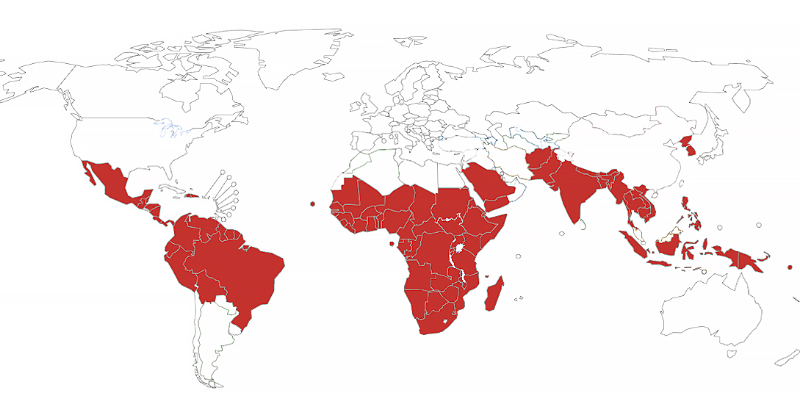
Figure 2. Countries with indigenous cases in 2000 and their status by 2018
Early diagnosis of malaria
- Early diagnosis reduces morbidity and mortality of malaria.
- All cases of suspected malaria should be confirmed with light microscopy or rapid diagnostic test (RDT).
1. Light microscopy
Light microscopy detection of malaria parasite in thick and thin smears is a reliable method for diagnosis, quantification of malaria parasites and identification of the infecting species. Light microscopy is the reference method for diagnosis of malaria and widely used due to its cost-effectiveness. However, its disadvantages include:
- Subjective: the accuracy of diagnosis is dependent on the competence of the microscopist.
- Time-consuming: the microscopist must examine at least 100 fields for malaria diagnosis.
- Hard to ensure the quality of the slides due to the variation in microscopic examination, quality of stain and smear.
2. RDT
RDT is an immune-chromatographic test for detecting parasite specific antigens in blood. The test result is readily available and less dependent on skilled personnel. Its disadvantages include:
- The different characteristics of these antigens may affect their applicability to be used in different situations.
- Lack of information about parasite load.
- The heterogeneous quality of commercially available products and the existence of lot-to-lot variation.
Detecting malaria on Mindray BC-6800Plus
The technical upgrades of automated hematology analyzers have made them very intelligent. In Mindray BC-6800Plus differentiating (DIFF) channel, RBC and WBC sub-populations are differentiated according to their sizes and complexity (Figure 3).
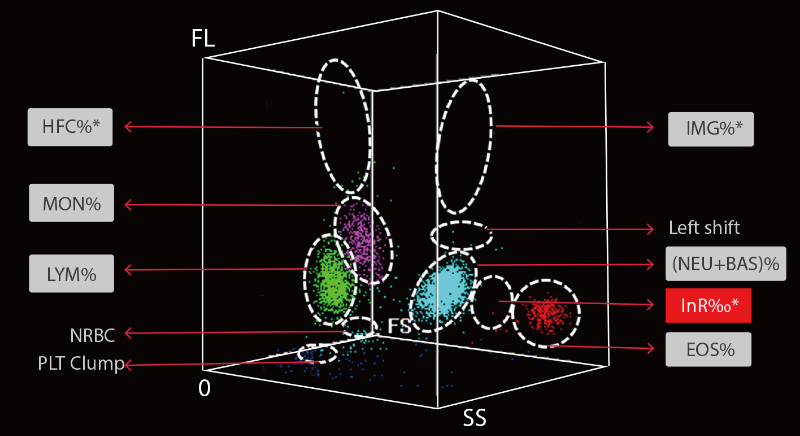
BC-6800Plus provides a dedicated InR flag and the number of InR (InR#) /the permillage of InR (InR‰) that is incorporated into complete blood count (CBC) as a screening tool for malaria (Figure 4).
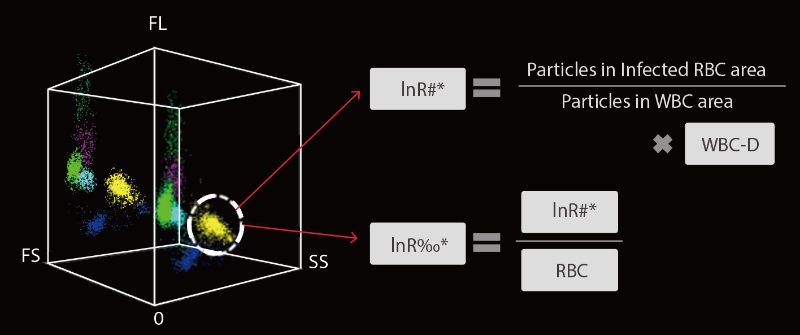
Effectiveness of BC-6800Plus for malaria screening
A study of 30,077 malaria cases was carried out where thick and thin smear examination was done by experienced microscopists and CBC was analyzed on Mindray BC- 6800Plus Hematology Analyzer. 285 cases were found to be positive for P. vivax malaria by smear examination. The study[2] found that sensitivity of 99.65% and NPV (Negative Predictive Value) of nearly 100% for InR flag for P. vivax, then BC-6800Plus can serve as an excellent screening tool especially for P. vivax malaria.
- Infected red blood cells resisted lysis and they occupied a zone as clustered dots in 3D cube (Figure 5).
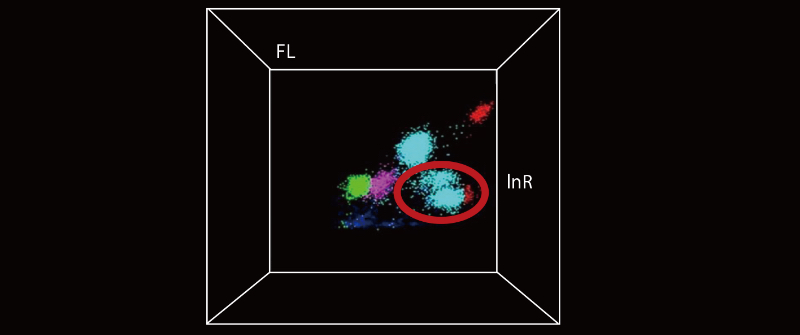
- In most cases of P. vivax, InR# was comparable to microscopy grade. Sometimes a large number of early ring forms lead to lower InR# than microscopy (Figure 6).
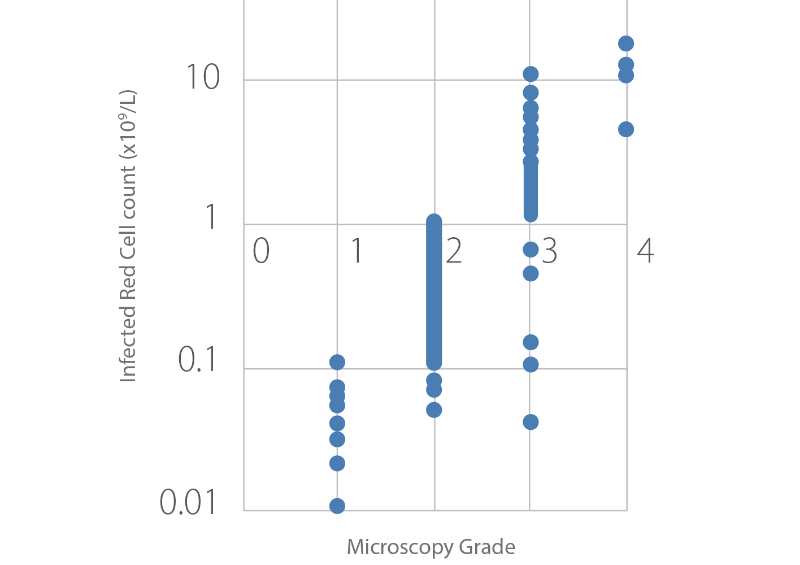
- True positive: few parameters were compared amongst smear positive malaria cases.
Control cases: smear negative cases where “infected RBC?” flag was not present. False positive cases: smear negative cases where “infected RBC?” flag was present. There were significant differences in these parameters(Delta WBC, InR# , InR‰)between the two groups (Table 1).
Table 1:Statistical comparisons of some important parameters amongst different groups.
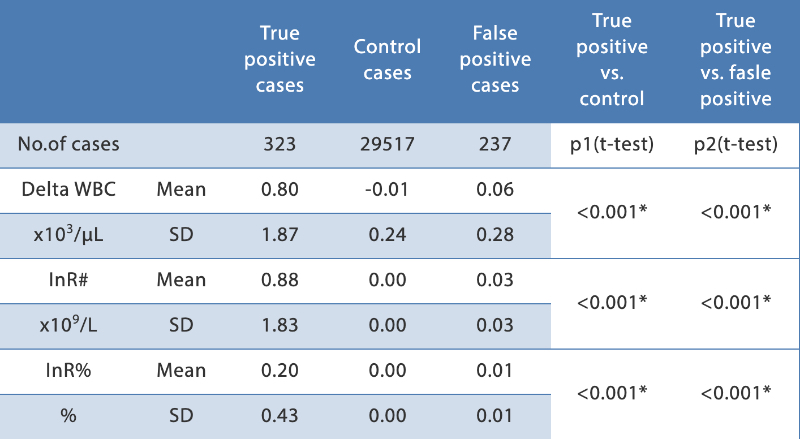
NLR=Neutrophi:Lymphocyle ratio, PLR=Platelet: Lymphocyle ratio, Delta WBC=WBC-DIFF count minus WBC-WNB count, InR#=Infected red cell count, InR#=Infected red cell percentage. (*indicates statistically highly significant)
- InR# was comparable with Delta WBC (WBC count from DIFF channel minus WBC count from WNB channel). InR# in some cases are significantly high but delta WBC are low. In these cases, InR cell affected the classification of WBC. False total WBC count was found by observing the correlation between Delta WBC and InR# (Figure 7).

The InR flag and parameters InR#/ InR‰ provided by BC-6800Plus can be used as an indicator for malaria screening. When the score for a certain type of abnormal blood cell morphology exceeds the set threshold, the analyzer reports the flag accordingly. The higher the threshold value is set, the lower the alarm sensitivity. You may set up the appropriate flag alarm threshold values on BC-6800Plus for malaria screening in clinical practice.
References
[1] World Health Organization. World Malaria report 2019. Available at: www.who.int/publications-detail/world-malaria-report-2019. Accessed 21 January, 2020.
[2] Dhanani, H. J. Evaluation of automated hematology analyser: Mindray BC-6800 plus as a screening tool for diagnosing malaria. International Journal of Research in Medical Sciences 8, 1750, doi:10.18203/2320-6012.ijrms20201922 (2020).
